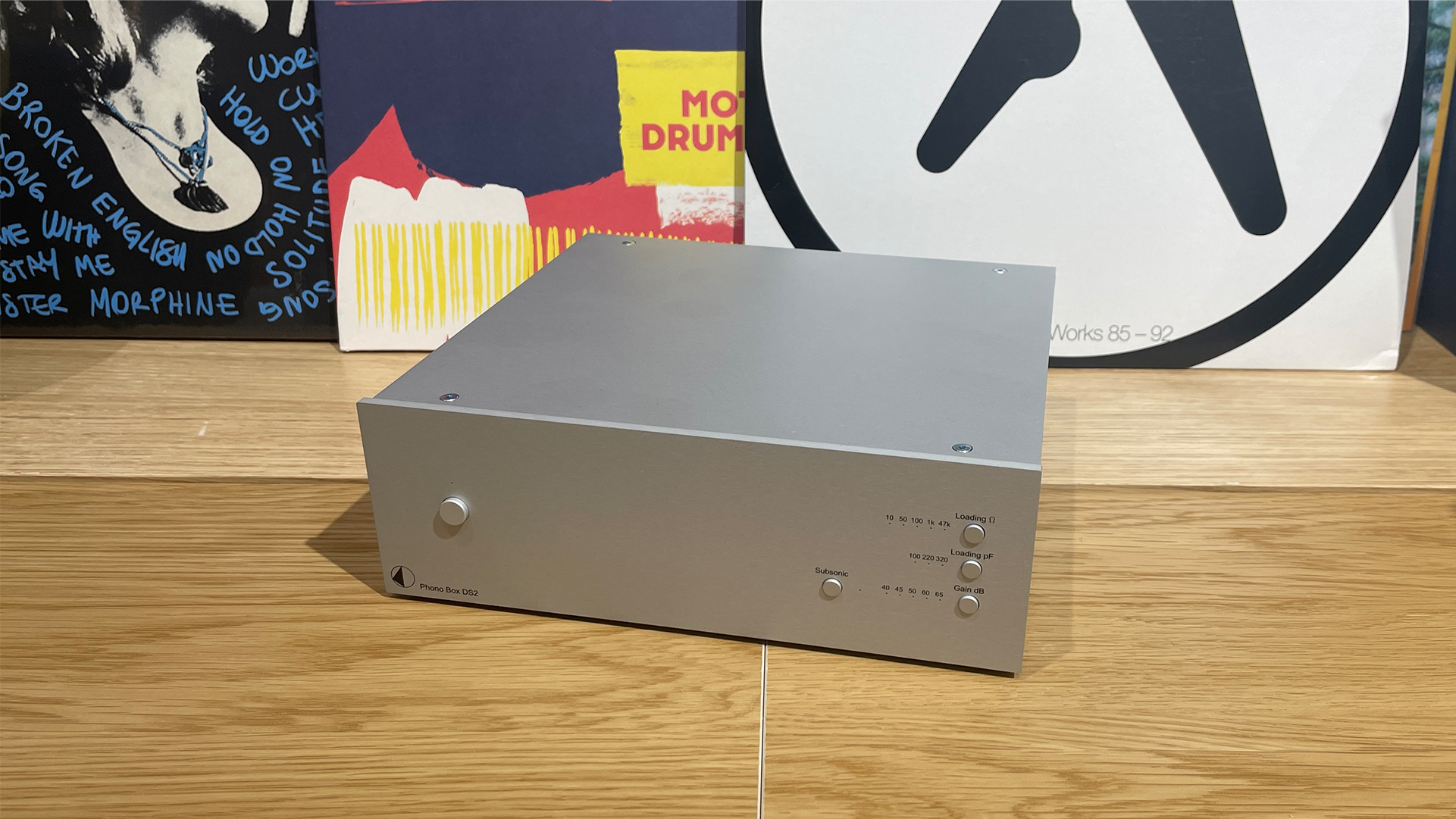
It is fair to say that the humble phono stage has more impact on the quality of record replay than any other part of the amplification chain. Such a unit not only does the heavy lifting as far as amplifying the cartridge’s tiny signal goes but also performs the delicate equalisation necessary for a flat frequency response. At the same time, it shouldn’t add too much noise and distortion into the equation either.
This isn’t an easy job to do, so it comes as no surprise to find that the phono modules built into most non-premium integrated amplifiers are pretty limited in ability. In most cases, a dedicated, stand-alone phono stage will give you a better sound, and that’s where Pro-Ject’s Phono Box DS2 comes in.
Build & design
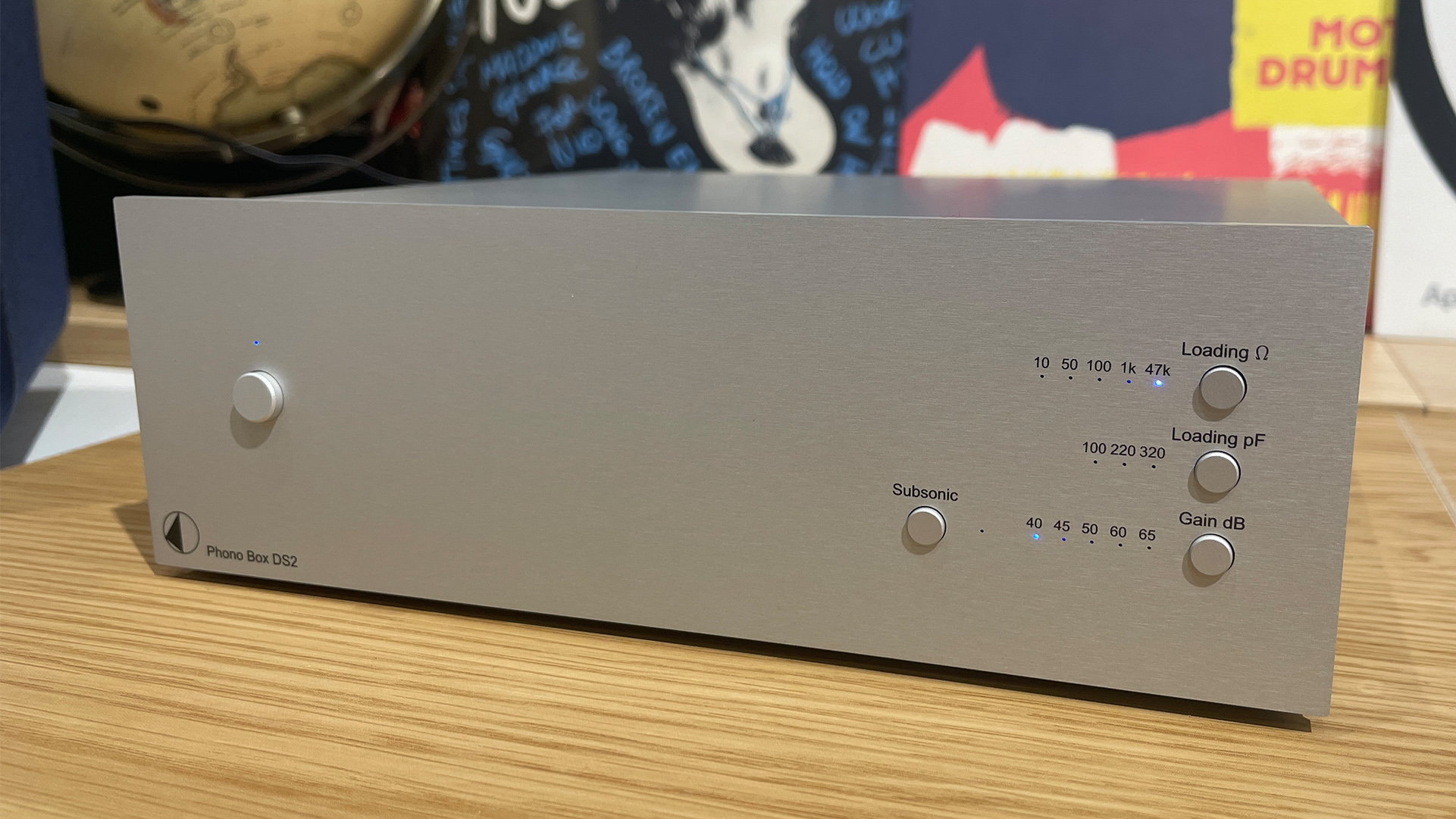
Pro-Ject has built its reputation on good value and high-quality vinyl replay, so it is no surprise to find that the Phono Box DS2 is a convincing piece of kit for the money. Its build is impressive with the aluminium casework feeling solid, smartly finished and put together with care.
Take a look inside and you will find a neat dual-mono circuit layout (which helps to optimise stereo imaging) and general standards of construction that are up with the best at this level. There are two standard finish finishes (black or silver) and, rather unusually, the option to add magnetic wooden side panels (walnut, rosenut or eucalyptus) for a small price premium (£65 / $129 / AU$159).
Features
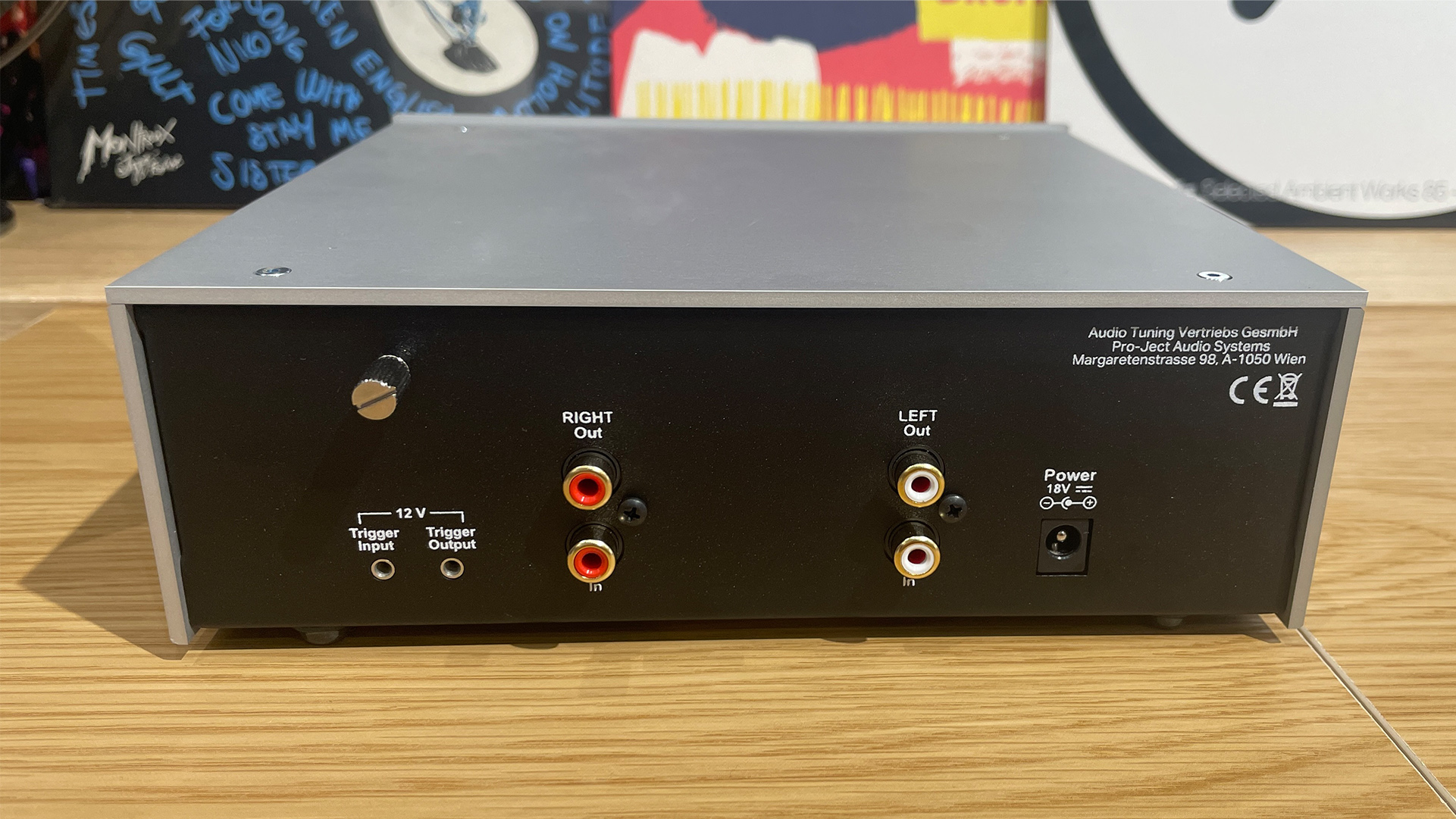
There is nothing unusual as far as connectivity is concerned; you get a stereo input, stereo output and a grounding post. More interestingly, the Phono Box DS2 outdoes most of the competition by offering a range adjustability that’s rare for the price. It can accommodate both moving magnet and moving coil cartridges thanks to gain settings that range from 40dB to 65dB. These are sensibly chosen values for the kinds of cartridges this phono stage will likely be partnered with, and are selected via a button on the front panel.
Most moving magnet designs will deliver comfortably with 40dB of gain, while all but the very lowest output moving coils will work well with up to 65dB. The Phono Box DS2 also allows a good amount of adjustability regarding input resistance (10-47kOhms) and capacitance (100pF, 120pF and 320pF). The result should be a more optimal performance from your cartridge.
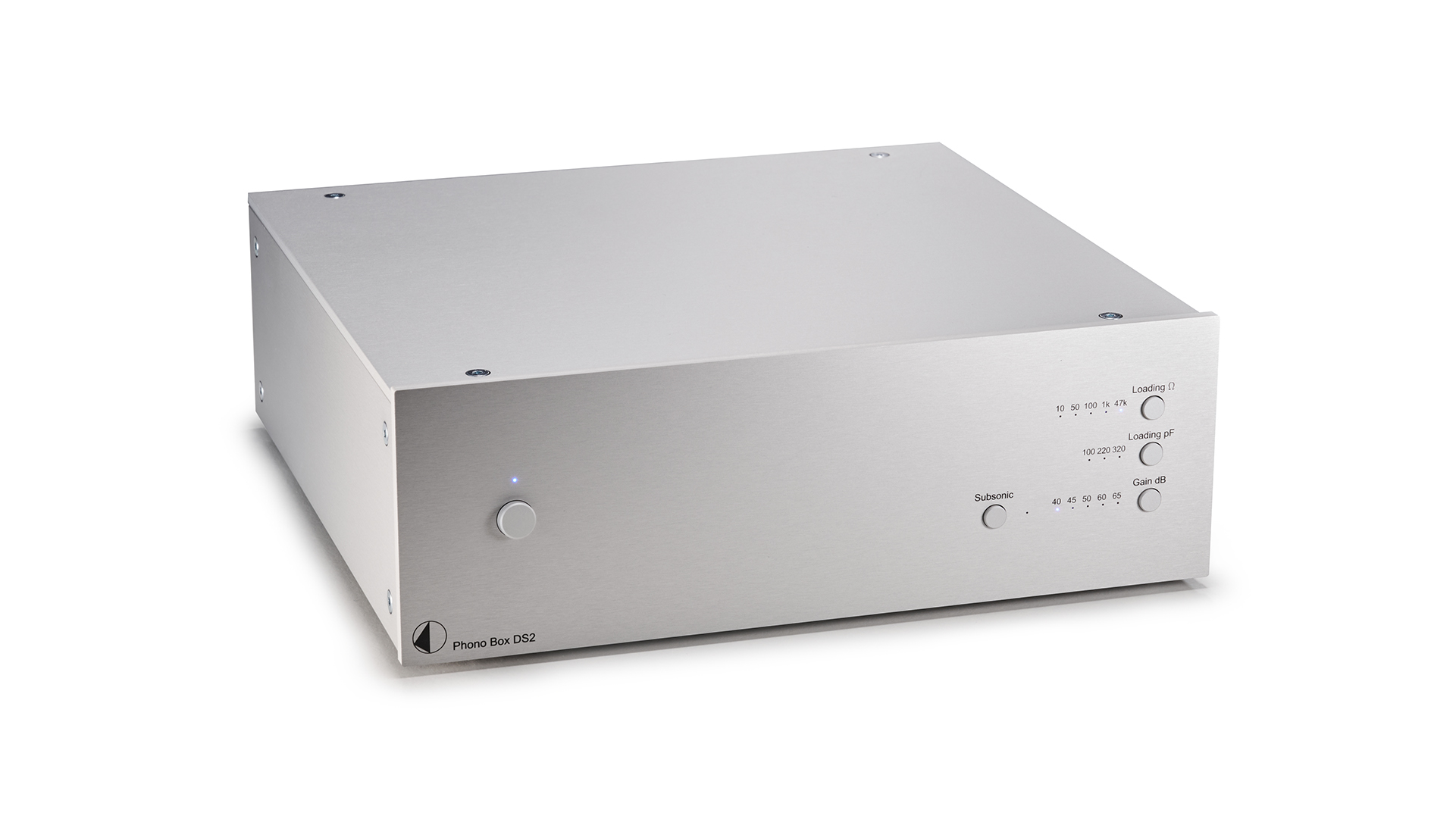
Moving magnet? Yes
Moving coil? Yes
Cartridge loading adjustment? Yes
Remote control? No
Dimensions (hwd) 71 x 206 x 194mm
Weight 1320g
Most rivals don’t offer this kind of adjustability, so it seems like a knockout punch for the Pro-Ject. But things aren’t so straightforward. Most phono stages at this level tend to get partnered with moving magnet cartridges, and as a breed such designs tend to have pretty standard requirements as far as electrical loading parameters go. In general, we rarely come across a case where pampering is necessary.
The story is different for moving coils though, as there are greater variations in what is required for optimal performance. That’s where the Phono Box DS2 offers a significant on-paper advantage over most competitors. However, even here we feel the need to point out that the choice of good-sounding moving coil cartridges that are price-compatible with the Pro-Ject phono stage isn’t particularly wide. The most affordable MC we’ve tested and liked is Ortofon’s Quintet Blue, which now retails for £459 / $569. Take a look at the step-up MC cartridge options beyond that and it doesn’t take long to hit four-figure price tags. At that point, the Phono Box DS2, as good as it is, becomes a limiting factor.
Sound
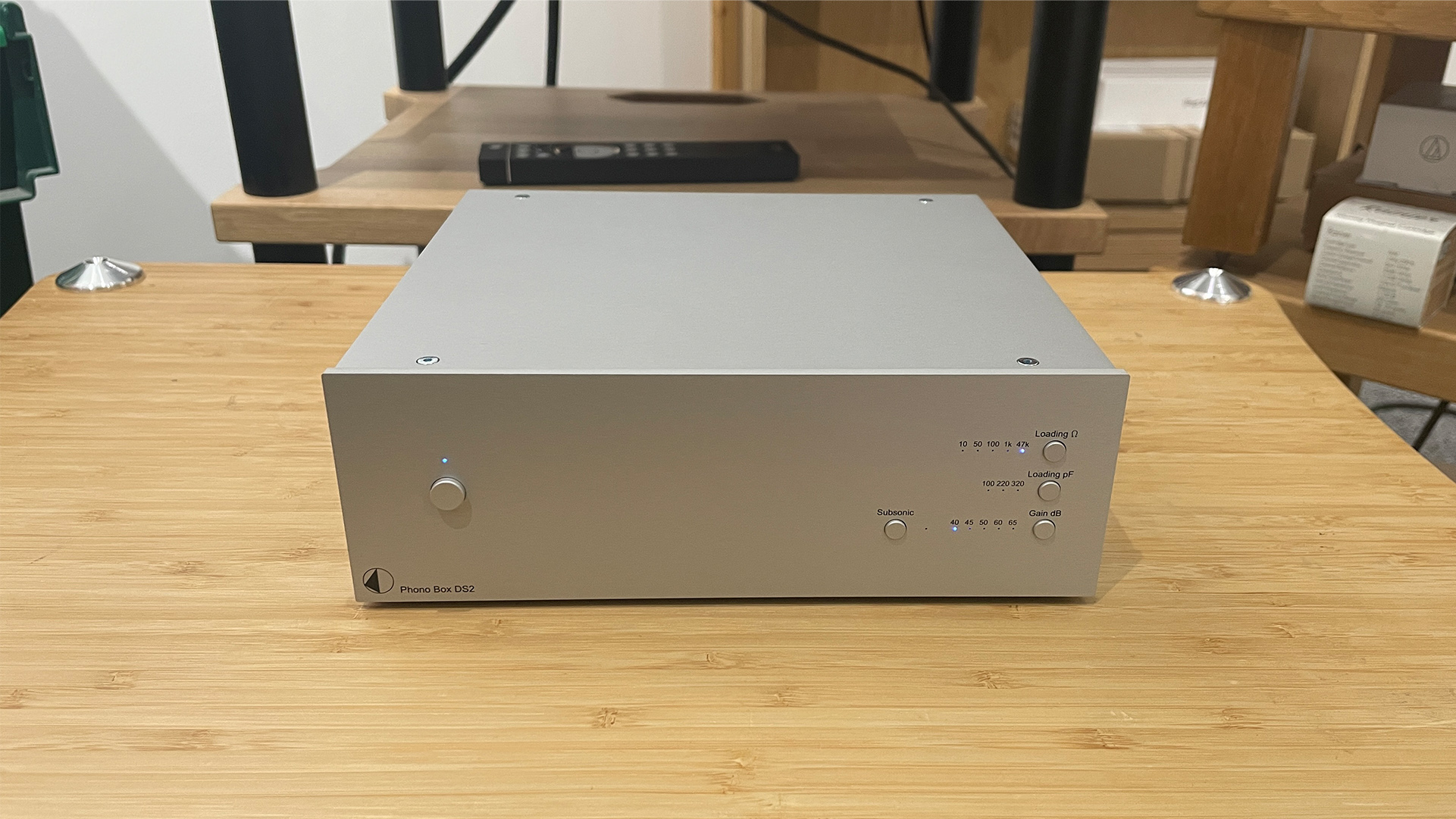
We plug the Phono Box DS2 into our reference set-up of Technics SL-1000R/Vertere Sabre record player, Burmester 088/911 MkIII amplifier and ATC SCM50 speakers, as well as a more price-comparable system using a Naim Nait XS3 integrated and KEF LS50 Meta speakers. We also try it with a range of cartridges: the Sumiko Rainier MM, Ortofon’s Quintet Blue moving coil and for fun, our reference Kiseki Purpleheart MC. Rega’s similarly-priced Fono MM phono stage is on our equipment rack as a price benchmark as is our reference Cyrus Phono Signature phono stage.
The Phono Box DS2 is a pleasingly consistent performer generally and sounds most at home with the more price-compatible Sumiko MM and Ortofon MC cartridges. Understandably so, as more ambitious options such as the Vertere and Kiseki need something more capable to shine.
There is much to like here once the Pro-Ject is surrounded by price-compatible components. The Phono Box DS2 has a clean and refined balance that allows it to slot into a wide range of systems without issue. Once properly warmed, it delivers crisply detailed results. Listening to Orff’s Carmina Burana it is easy to appreciate the Pro-Ject’s spacious and expansive presentation. While alternatives like the Rega Fono MM deliver the sound with a little more verve and attack, the Phono Box takes a more relaxed approach to music-making. It renders instruments in a smoother and more full-bodied way and does a better job of revealing the space around them.
Carmina Burana’s brutal crescendos highlight the Phono Box’s slightly safe nature, where it favours taking a more sanitised view of the music. The dynamic extremes may be a little rounded but things aren’t taken too far and we’re still having fun. The presentation remains clear and informative, it's one that’s well-organised and musically interesting.
As the music becomes increasingly dense and demanding, the Phono Box DS2 stands firm. It has a good sense of composure and retains control when stressed. We switch to Four Tet’s There Is Love In You and like the Pro-Ject’s expansive and precise imaging. Things are nicely layered and retain stability when the production gets busy.
Would we like a bit more sense of drive? Certainly, but this unit still communicates the energy of the music well. It has our feet tapping, which is more than many similarly-priced alternatives can manage. Lows are a touch rounded but retain enough in the way of punch and agility to please. There is good low-end authority here and a feeling of muscularity that isn’t so common.
The Carpenter’s Best Of collection shows off the Phono Box’s lovely midrange. On We’ve Only Just Begun, the Pro-Ject’s articulate and fluid character through the middle frequencies becomes obvious. It sounds sweet, open and delicate when required, and delivers the passion in Karen Carpenter’s voice well.
Verdict
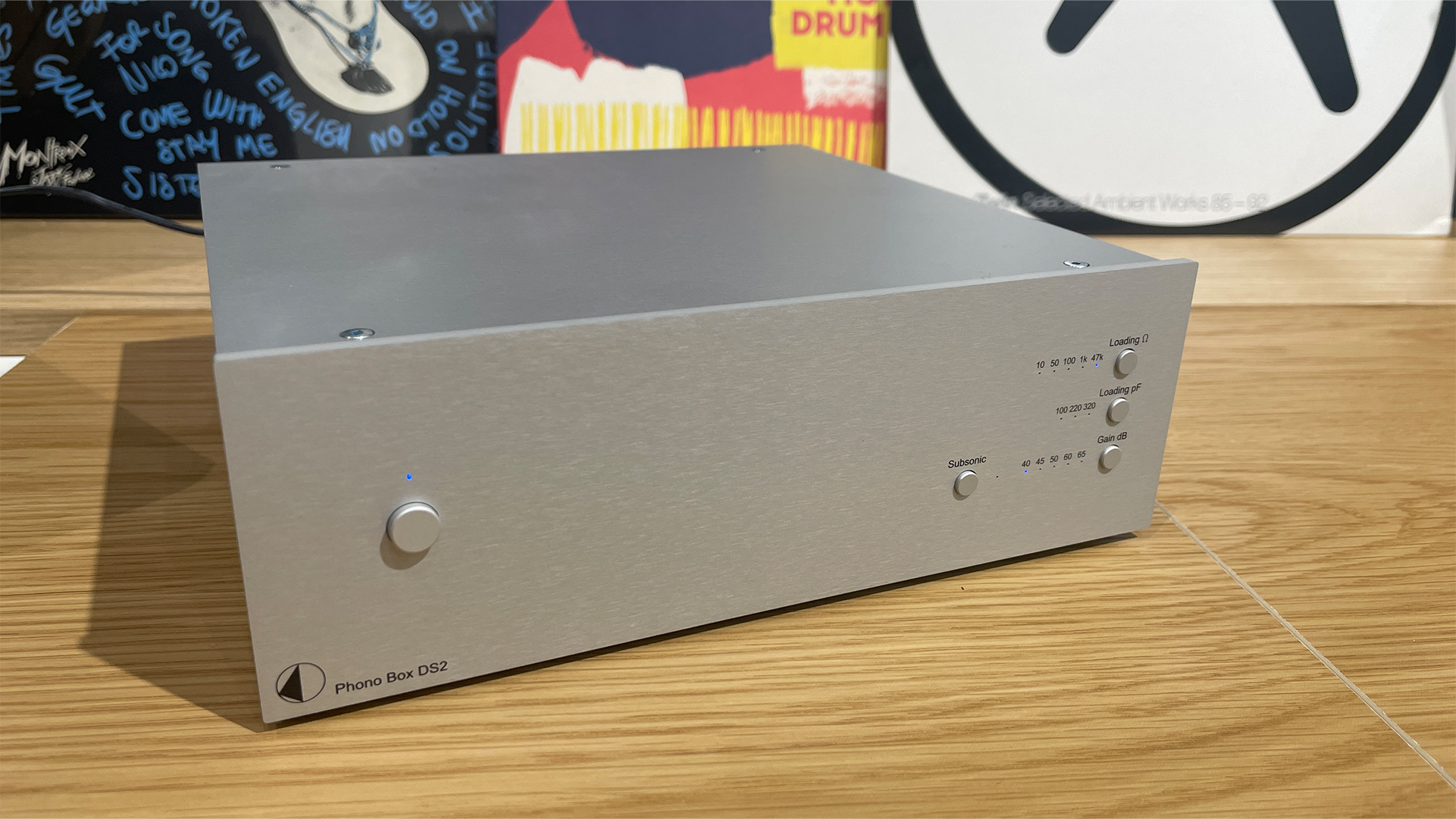
Add relatively low noise levels to the Phono Box DS2’s fine build and insightful nature and you have one of the better phono stages at this level. Its flexibility is likely to have plenty of appeal for some but we think its easy-going nature is what really makes it worthy of a place on the shortlist.
SCORES
- Sound 4
- Build 5
- Features 5
MORE:
Read our review of the Rega Fono MM Mk5
Also consider the Graham Slee Gram Amp 2
Read our Cambridge Audio Alva Duo review







